Tarot Reads and Astrology Insights on Horosky
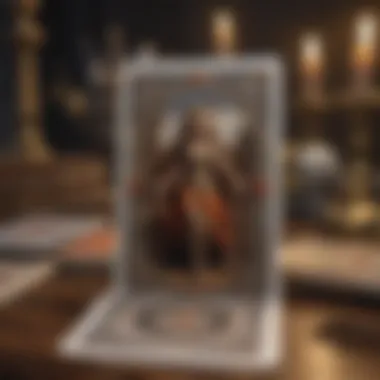
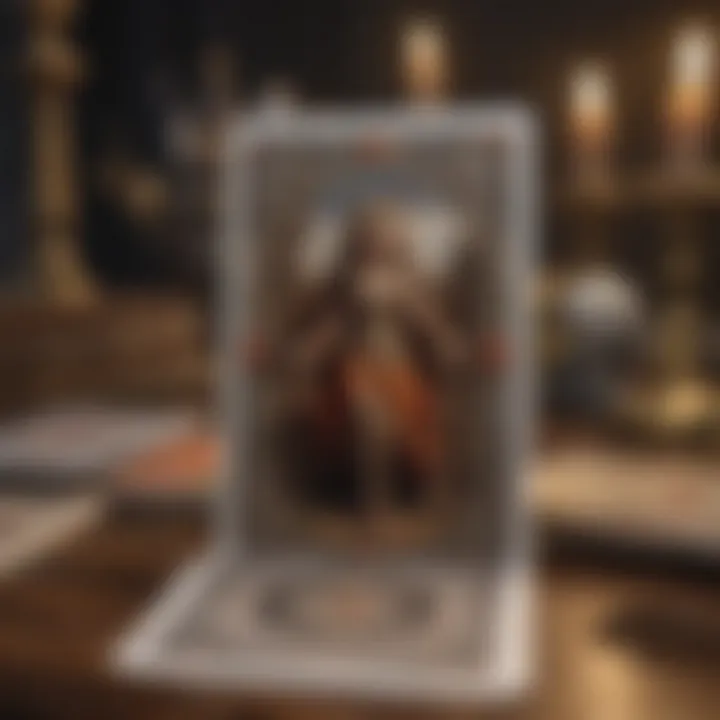
Intro
Tarot and astrology stand at the crossroads of ancient wisdom and modern curiosity. Both systems offer insights that can illuminate the path we traverse in our daily lives, capturing the intricate dance between the cosmos and our inner selves. On the Horosky platform, these two practices intertwine, creating a rich tapestry of understanding and exploration.
The fusion of tarot card readings with astrological principles opens a portal to deeper knowledge about ourselves. Tarot, with its archetypal imagery, provides intuitive pathways to grasp our challenges and aspirations. Meanwhile, astrology roots us in the rhythm of the universe, guiding us through the cycles that influence our lives. Together, they furnish a comprehensive toolbox for personal growth, helping us navigate even the trickiest corners of our existence.
As we embark on this exploration, we will delve into the historical roots of tarot, the methods used for readings, and how these cards can align with astrological insights. Whether you are a seasoned practitioner or a curious newcomer, the following sections will not only illuminate concepts but also highlight practical applications for daily living.
Prologue to Tarot Cards
Understanding tarot cards is like opening a door to a world filled with symbols and stories. It’s not just about predicting the future; it’s about diving into the depths of our own psyche. The art of reading tarot has its roots in ancient practices. Yet, it remains highly relevant today, especially among those who seek guidance on their personal journeys.
The role of tarot in one’s life can vary greatly. Some view it as a tool for decision-making, while others embrace it for self-reflection and growth. In exploring tarot, individuals can uncover hidden insights about their behavior, desires, and fears. Beyond mere divination, tarot serves as a mirror holding up to our everyday experiences, shedding light on areas that may require attention.
Defining Tarot
Tarot cards are a set of 78 cards used for divination and introspection. Each card possesses unique imagery and meaning, offering insights into various aspects of life. Typically, tarot is divided into two main sections: the Major Arcana, which consists of 22 cards depicting significant life themes, and the Minor Arcana, which encompasses the remaining 56 cards, focused on everyday events and influences.
The images depicted on these cards can carry deep personal significance. Take, for instance, the Fool card, symbolizing new beginnings and adventures. When drawn, it can ignite feelings of excitement or provoke fears of the unknown. This is the essence of tarot – it engages our intuition, guiding us toward understanding ourselves and our circumstances more fully.
A Brief Historical Overview
Tarot’s history is as rich and multi-faceted as the cards themselves. Though its origins are somewhat murky, tarot likely emerged in the 15th century in Europe, initially as a card game. The shift towards its spiritual and mystical uses began in the late 18th century, primarily through the works of mystics like Antoine Court de Gébelin and Adam McLean.
In the late 19th and early 20th centuries, tarot gained traction among occultists and was integrated into various esoteric practices. The Rider-Waite deck, created by Arthur Edward Waite and illustrated by Pamela Colman Smith in 1909, became widely popular and is now one of the most recognized tarot decks. This historical context is vital, as it reveals how tarot evolved from a simple game to a complex tool for spiritual and personal development.
"The tarot is a revelation of the path of ascension—the cards are symbols, stories speaking to the psyche."
In summary, the tarot serves as more than a means of divination; it’s a pathway toward deeper self-knowledge and understanding of the universe's mysterious ways. As we move forward in this article, we will explore how tarot interacts with astrology and further enhances the insights it offers, particularly in the context of personal growth.
The Structure of Tarot Decks
Understanding the structure of tarot decks is pivotal in the exploration of tarot readings, as it paints a picture of how these cards function both individually and as a cohesive unit. Tarot decks typically consist of seventy-eight cards, divided into two main categories: the Major Arcana and the Minor Arcana. Each section offers unique insights and serves different purposes in readings. Knowing the structure not only enhances your interpretative skills but also deepens your appreciation for this divinatory tool.
The significance of the structure lies in how it reflects the journey of life and the various experiences we encounter. The different cards symbolize distinct archetypes and life lessons, infusing readings with rich narratives. A well-structured deck enables a seamless flow of interpretation, offering users clarity and context during their readings.
Major Arcana Explained
The Major Arcana consists of twenty-two cards, each representing major life themes and significant spiritual lessons. Cards like The Fool, The Magician, and The World don't just add to the numbers; they strike real chords during a reading. The Fool, for instance, embodies new beginnings and adventure, while Death signifies transformation and major life shifts.
These cards invite individuals to reflect deeply on crucial turning points in their own lives, helping to map the journey of personal growth. When drawn, they often reveal profound insights, acting almost as touchstones for understanding life’s complexities. Connecting these cards with zodiac signs can further enhance their meanings. For example, The Chariot is often linked to Cancer's themes of home and family, highlighting how astrological elements influence card significance.
Minor Arcana Insights
In contrast, the Minor Arcana consists of fifty-six cards, which are subdivided into four suits: Cups, Wands, Swords, and Pentacles. These suits mirror everyday experiences in life, capturing emotions, actions, thoughts, and material aspects. Each card within these suits offers guidance about the day-to-day matters we face.
- Cups deal with emotional well-being and relationships. For instance, The Two of Cups signifies partnerships and connections, while the Five of Cups might suggest grief or loss.
- Wands represent creativity and action. Cards like the Ace of Wands point to new ambitions, while the Ten of Wands can suggest burdens or feeling overwhelmed.
- Swords are about intellect and conflict. The Three of Swords can denote heartache, while the Ace of Swords symbolizes clarity and truth.
- Pentacles focus on the material realm, relating to finances and career. The Six of Pentacles illustrates generosity, while the Five of Pentacles suggests hardship.
These cards provide a layered context in readings, allowing for a nuanced interpretation that captures both the overarching themes of the Major Arcana and the immediate concerns reflected in the Minor Arcana.
Overall, grasping the structure of tarot decks is essential for anyone looking to delve into tarot for insights. It allows readers to not only interpret single cards but also to understand how each card fits into a broader tapestry of themes and energies, providing a more comprehensive view into the querent's life.
Reading Tarot Cards
Reading tarot cards offers a profound way to explore not just the external world but also the intricate landscapes within oneself. It serves as a bridge connecting the mundane to the mystical, allowing users to tap into deeper reservoirs of insight and understanding. This section will illuminate the processes and practicalities involved in tarot readings, highlighting key spreads and the nuances of interpreting the cards.
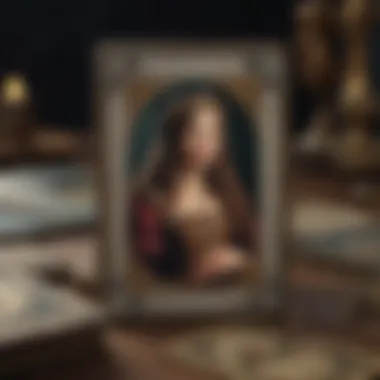

Common Spreads and Layouts
When it comes to reading tarot cards, the layout—or spread—can significantly affect the depth and clarity of insights gained during a reading. Each spread has been developed to serve various purposes, helping users tailor their experience to specific questions or themes in their lives.
Three-Card Spread
The Three-Card Spread is a favorite among both novice and seasoned tarot enthusiasts. This layout is rather straightforward, typically asking for a past, present, and future overview. The beauty of this simplicity lies in its accessibility.
- Key Characteristic: Its simplicity allows for quick insights without overwhelming the reader.
- Why It’s Beneficial: The Three-Card Spread is an excellent choice for individuals who might be hesitant to delve deeper into more complex spreads. It’s essentially an appetizer for a richer tarot experience.
- Unique Feature: This spread can be customized in terms of themes—like love, career, or health—making it versatile.
However, its straightforward nature can also leave deeper issues unexamined, which may lead some to seek more comprehensive spreads later on.
Celtic Cross
The Celtic Cross is another powerful layout, often considered the gold standard for in-depth readings. It offers a comprehensive view of the seeker’s situation, identifying challenges and opportunities.
- Key Characteristic: The Celtic Cross dives deep into the complexities around a situation, making it a more thorough approach.
- Why It’s Beneficial: For individuals seeking answers beyond surface-level issues, this spread pulls no punches, laying all the cards on the table.
- Unique Feature: It consists of ten positions that reveal layers of meaning, covering influences and inner thoughts, which can bring remarkable clarity.
However, its complexity can be daunting for beginners and can lead to confusion if the reader is not adequately prepared.
Relationship Spread
As the name implies, the Relationship Spread revolves around understanding dynamics between parties, be it friends, partners, or family members. It unearths underlying currents affecting the relationship's flow.
- Key Characteristic: Focused on interpersonal dynamics, it often addresses what each person brings to the table.
- Why It’s Beneficial: This spread is invaluable for those seeking clarity in personal interactions, allowing for an honest evaluation of feelings and compatibility.
- Unique Feature: It may incorporate cards that reveal not just how individuals perceive each other but also what might need healing or change.
While the insights offered can be profoundly transformative, it may also challenge the status quo, which some may find difficult to confront.
Interpreting the Cards
Once the cards are laid out, the true challenge begins: interpretation. Each card carries unique meanings and can shift dramatically based on its position and surrounding cards. A talented reader must weave together these threads to narrate a compelling story, drawing upon intuition, knowledge of the cards, and awareness of the querent’s context.
Interpreting tarot cards demands more than rote memorization of meanings; it calls for an engagement with symbols and how they resonate at a personal level, creating a tapestry of insight that's intricately interlinked with the querent's journey. It's a dance of understanding, requiring sensitivity and openness, both from the reader and the seeker.
The Connection Between Tarot and Astrology
Understanding the intertwined relationship between tarot and astrology is essential for any enthusiast looking to deepen their practice. Both systems offer valuable insights, yet their connection significantly amplifies the wisdom one can gain. The tarot deck, rich with archetypal symbols, resonates with the energies and traits of astrological signs. Hence, when reading tarot, one can uncover astrological correlations that deepen the interpretation of the cards drawn. This synergy enriches readings, providing clarity in personal dilemmas and guidance in navigating life’s winding roads.
How Tarot Relates to Zodiac Signs
The twelve zodiac signs, each representing distinct personality traits and life themes, align beautifully with the symbols found in the tarot. For example, Aries, known for its pioneering spirit, corresponds to the card of The Emperor. This card embodies authority and leadership, reflecting the assertive nature of Aries individuals. Similarly, The High Priestess, often seen as a symbol of intuition and mystery, resonates strongly with Cancer, a sign ruled by emotions and intuition.
Also, Tarot decks often incorporate the elements associated with zodiac signs:
- Fire (Aries, Leo, Sagittarius) connects with The Chariot, symbolizing action and determination.
- Earth (Taurus, Virgo, Capricorn) relates to The Empress, embodying nurturance and stability.
- Air (Gemini, Libra, Aquarius) correlates with The Justice card, focusing on balance and communication.
- Water (Cancer, Scorpio, Pisces) is often linked with The Moon, portraying the depths of emotions and subconscious.
This connection between tarot and astrology allows practitioners to pull specific insights based on zodiac influence, enhancing the reading experience.
Astrological Correspondences of Tarot Cards
Each tarot card can be associated with an astrological sign or planetary influence, creating a rich layer of interpretation. Here are some noteworthy correspondences:
- The Fool - Linked with Uranus, symbolizes liberation and new beginnings, mirroring the innovative nature of Aquarius.
- The Lovers - Tied to Gemini, this card highlights themes of duality, choices, and relationships in harmony.
- The Wheel of Fortune - Connected to Jupiter, representing growth and luck, echoing Jupiter's expansive traits in Sagittarius.
- Death - Associated with Scorpio, this card signifies transformation, rebirth, and the cyclical nature of life.
Tarot readings that incorporate these astrological correspondences can yield profound insights about timing, relationships, and personal development. The dual lenses of tarot and astrology provide a comprehensive view of life’s situations, promoting deeper self-awareness and facilitating informed decision-making.
Understanding these connections equips tarot users to approach readings not just as mere fortune-telling, but as a guide for personal insight and growth.
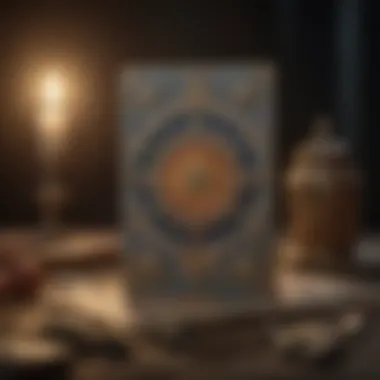
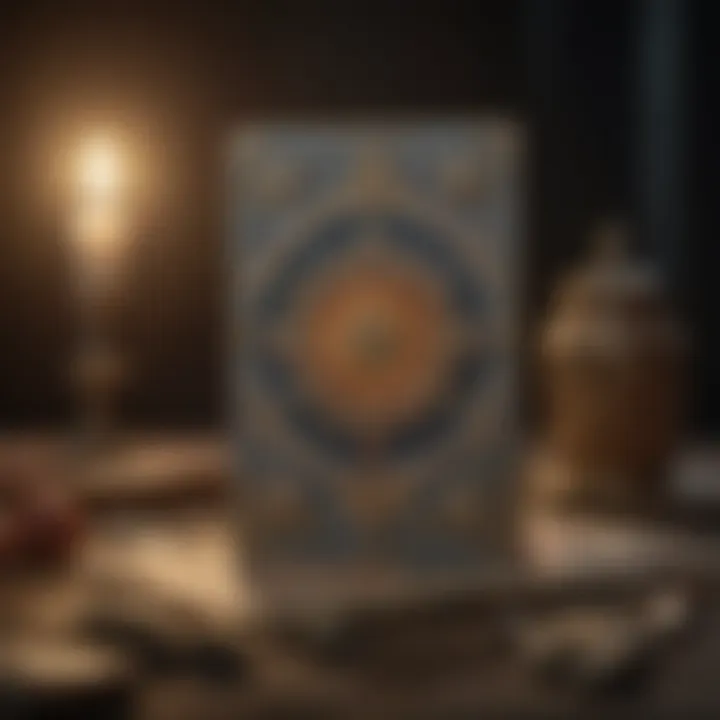
Utilizing Tarot for Personal Growth
The journey into the realm of tarot is often painted as a mystical odyssey, but its potential for personal growth is grounded in real, impactful practices. When individuals turn to tarot, they not only seek insights into their lives but also tools that can foster a transformative relationship with themselves. This section delves into the specific elements that contribute to harnessing tarot for personal evolution, examining the benefits it brings and considerations to keep in mind while navigating this introspective path.
Self-Reflection Through Tarot
Self-reflection serves as the cornerstone for personal growth, creating a dialogue between our present selves and the subconscious thoughts that linger just beneath the surface. Tarot cards can act as mirrors, reflecting our internal landscape. Each shuffle, each draw, leads to a deeper understanding of our emotions, motivations, and fears.
When one lays out the cards, the images can provoke powerful questions. Consider this example:
- The High Priestess might call attention to one’s intuition, encouraging the exploration of hidden truths.
- The Tower, with its upheaval, could prompt the querent to confront unexpected changes in their life.
The visual language of tarot allows for a broad spectrum of interpretation. Journaling after readings often brings clarity. By writing down thoughts during or after the reading, one captures fleeting ideas that might otherwise be lost. It’s like engaging in a conversation with oneself, where each card leads to new revelations about desires, anxieties, and aspirations. These epiphanies open doorways to better self-understanding, creating pathways to emotional resilience and nurturing personal growth.
Tarot for Decision Making
In a world overflowing with choices, making decisions can sometimes feel like wandering in a thick fog. Here, tarot can serve as a guiding light, illuminating paths that were previously obscured by uncertainty. When faced with pivotal decisions, drawing a few cards can clarify thoughts and feelings.
For instance, let’s imagine a scenario of contemplating a job change. Pulling The Chariot signifies determination and movement forward, suggesting action is necessary. Conversely, The Hermit might imply a period of introspection is warranted before making any commitments.
Before diving into tarot for decisions, a few practices should be considered:
- Set your intention: Clearly define what you seek clarity on. This focus can help guide the reading.
- Use relevant spreads: A simple three-card spread can provide insights into past influences, present circumstances, and future possibilities.
- Stay open-minded: Approach the cards without rigid expectations; their wisdom often reveals unexpected angles.
Utilizing tarot in decision-making is about nurturing the intuition that often gets muffled in daily noise. This process is not about predicting the future but rather, about unraveling layers of thought, encouraging informed and thoughtful choices.
"Tarot doesn’t dictate outcomes; it illuminates options, unveiling paths you may not have recognized."
Through self-reflection and informed decision-making, tarot becomes an instrument of growth, guiding users on personal journeys to clearer insights and deeper understanding of themselves.
Practical Tips for Tarot Users
Venturing into the world of tarot can feel like stepping into uncharted territory. For many, the allure lies not just in the cards themselves but in the journey of discovery and self-reflection they initiate. Practical tips for tarot users provide essential guidance that enhances both the reading experience and the insights gained. It becomes crucial for those diving into tarot alongside their astrological pursuits. Understanding these nuances can lead to a more profound appreciation of this ancient practice.
Finding the Right Tarot Deck
Choosing the right tarot deck is akin to selecting a trusted companion for a long journey. Each deck has a unique energy and symbolism that may resonate differently with an individual. It’s important to consider personal preferences, aesthetics, and the themes that speak to you. Some may gravitate toward traditional decks like the Rider-Waite, with its classic imagery, while others might prefer contemporary interpretations such as the Wild Unknown Tarot.
- Research Different Decks: Familiarize yourself with the art style and the symbolism. Websites like reddit.com often contain discussions about various decks, helping you to discern what aligns with your personal journey.
- Trust Your Intuition: When browsing, pay attention to how each deck makes you feel. Does it spark curiosity or resonate with your experiences? Your instinct is a valuable guide.
- Physical Connection: Handle the cards before buying if possible. A tactile connection can sometimes sway your decision more than any online review could. Let your fingers glide over the cards; it’s about how they feel in your hands.
Ultimately, the right deck should spark a sense of familiarity and personalization, fostering a deeper connection during readings.
Creating an Inviting Reading Space
A comfortable reading environment can transform your tarot practice from a simple routine into a sacred ritual. To create an inviting reading space, consider a few key elements that promote tranquility and focus. The space should encourage an open mind and heart, conducive to clarity of thought.
- Choose a Quiet Spot: Ideally, find a location free from interruptions. Even a small corner will do, so long as it feels safe and serene.
- Incorporate Natural Elements: Plants, crystals, or even a candle can positively influence energy. A small indoor plant might breathe life into your space, while crystals could enhance your intuition.
- Personal Touches: Adding items that resonate personally, such as artwork or mementos that inspire you, helps tailor the environment to your needs. Each time you sit down to read, you will be reminded of your intentions and growth.
"The space in which you read tarot can shift the very essence of your practice. Make it a sanctuary for your spirit."
Consider all these various aspects and tailor your space so that each reading feels fresh yet familiar. Thus, not only will you enhance your interaction with tarot, you also align your readings with the greater astrological energies at play.
Following these practical tips can make a significant difference in your tarot experience. As you immerse yourself in this fascinating intersection of tarot and astrology on Horosky, you'll find the right tools and environment conducive to unlocking deeper insights.
Common Misconceptions About Tarot
The world of tarot can be a tricky landscape to navigate. While popular culture often batters the art of tarot with sensationalized portrayals, many underlying truths go unexamined. This section sheds light on why it's essential to disentangle myths from reality regarding tarot card insights. Clarifying these common misconceptions not only enriches the reader's understanding but also fosters a more profound respect for this ancient practice. Grasping these insights is vital for anyone interested in using tarot as a valuable tool for guidance and self-reflection.
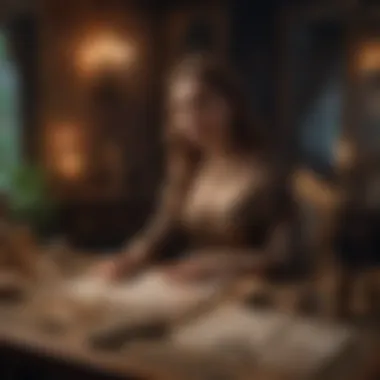

Debunking Myths
Contrary to the common belief, tarot cards are far more than mere fortune-telling instruments wielded by mystical figures draped in flowing robes. Often, they are misconceived as ominous predictors of doom or harbingers of fate. In truth, readings are a reflection of the present, drawing upon an individual's current situation and emotional landscape. Tarot speaks to possibilities and options rather than certainties. Through engaging with these cards, practitioners explore avenues for potential growth based on their choices, rather than being pigeonholed by a predestined path.
Some specific myths worth addressing include:
- Tarot is Evil: Many view tarot through a lens tainted by superstition. However, the essence of tarot is rooted in personal insight and empowerment.
- Only Psychics Can Read Tarot: While some folks may have natural inclinations towards intuition, anyone can help themself by learning how to interpret the images and symbols on the cards.
- Tarot Is a Science: Tarot's strength is not grounded in science; it resides in the realm of intuition and personal perceptions.
Understanding the artistry of these cards opens portals to self-discovery rather than restriction.
Understanding the Limitations
It’s also critical to acknowledge the limitations of tarot reading. Readers can sometimes be overly optimistic in presenting forecasted outcomes based on a single reading. This might lead some to become overly reliant on tarot for decision-making. During a reading, the cards provide insight into the current energies and potential paths available, but they don’t absolve the responsibility of one’s choices. Thus, practitioners must cultivate a balanced view.
Another important consideration is that tarot cards cannot solve every problem or answer every query. They can guide and illuminate aspects of a situation but cannot substitute for professional advice, especially concerning mental health or legal matters.
- Personal Accountability: Relying too heavily on tarot can lead to avoidance of personal responsibilities. It’s about using insights to empower choices, not abdicating them to fate.
- Complexity of Life Situations: Tarot doesn't always have a straightforward answer for intricate life dilemmas. Each card brings a layer of meaning, but these meanings can vary dramatically based on individual circumstances.
Here’s a crucial point: tarot is best used as a tool for reflection, not a crutch for decision-making. This nuanced understanding helps individuals utilize tarot more effectively while remaining aware of its boundaries.
"Tarot is a map of energies, not a roadmap for life. The journey is yours to navigate."
Through this lens of clarity, both seasoned practitioners and novices can approach their tarot experiences with a well-rounded perspective.
The Future of Tarot Study
As we stand on the brink of an era shaped by rapid change, the future of tarot study offers a fascinating glimpse into how ancient practices evolve and intertwine with modernity. The topic is significant not only for practitioners but also for those interested in astrology, self-discovery, and holistic approaches to life. With the growing interest in personal development and spirituality, tarot is becoming more than just a tool for divination; it’s morphing into a pathway for reflection and understanding.
Emerging Trends
Tarot is witnessing numerous emerging trends that reflect societal shifts and the evolving consciousness of individuals. Some of these trends are worth discussing:
- Diverse Deck Choices: There’s a growing market for unique tarot decks that reflect various cultures, themes, and artistic styles. From minimalist designs to those brimming with symbolism, collectors and readers alike are increasingly drawn to decks that resonate on a personal level.
- Tarot as Therapy: There’s a noticeable increase in the use of tarot for therapeutic practices. Mental health professionals are incorporating tarot into their sessions, viewing it as a means for clients to explore emotions and subconscious patterns. Through guided interpretations, individuals can find grounding and gain insights into their life's journey.
- Workshops and Community Gatherings: An uptick in local meetups and online workshops focused on tarot suggests a desire for community learning. Sharing insights in a group allows for a richer understanding, with insights from many perspectives enhancing personal interpretations.
- Personalized Readings: The trend of personalized readings based on individual astrological charts is gaining traction. People are looking for readings tailored to their birth charts, reinforcing how tarot and astrology can complement each other. This demands that practitioners deepen their knowledge in both domains.
With a foot in the past and a face turned towards the future, tarot is poised to become a bridge connecting various aspects of human experience.
Integrating Technology in Tarot
As we delve into the future, technology's role in tarot cannot be overlooked. The age of smartphone applications and online platforms has transformed how enthusiasts engage with tarot. Here’s how technology is reshaping the tarot landscape:
- Mobile Apps: There are numerous mobile applications that help users pull cards, interpret spreads, and even journal their reflections. These apps allow beginners and seasoned practitioners to access tarot insights anytime, anywhere.
- Virtual Readings: Gone are the days of needing to sit across from a reader. Online platforms allow for virtual tarot readings, expanding access to skilled readers regardless of geographical constraints. This opens up a world where enthusiasts can connect with experts worldwide, enriching their practice.
- Online Courses: The availability of online courses enables learners of all levels to deepen their understanding of tarot. These platforms often provide structured curriculums that combine traditional teachings with modern perspectives, fostering a new generation of practitioners.
- Digital Forums and Communities: Online spaces such as Reddit allow tarot enthusiasts to discuss their interpretations, experiences, and insights. Engaging with like-minded individuals fosters a sense of belonging while allowing for rich discussions and shared learning.
In summary, as tarot continues its journey into the future, embracing new technologies while staying grounded in ancient wisdom can lead to a vibrant evolution. By being open to change, practitioners can not only deepen their understanding but also support a broader conversation about how tarot can guide us in an increasingly complex world.
"The beauty of tarot lies not just in its predictions but in its power to provoke thought and awareness around our life choices."
Thus, exploring the future of tarot invites both challenges and opportunities, reminding us that growth often surfaces from the interplay between tradition and innovation.
Ending
As one wraps up the journey through the multifaceted world of tarot card insights and astrology, it is essential to consider the significance of what has been discussed. The combination of tarot and astrology offers a profound lens through which we can view our lives’ complexities, providing clarity and understanding in a world often filled with uncertainties.
The importance of this conclusion lies in synthesizing how these tools can foster personal growth. Tarot encourages introspection, inviting individuals to confront their emotional landscapes, while astrology provides broader contextual understanding through time and celestial movements. Together, they can create a more balanced perspective, aiding in self-discovery and empowerment.
A few vital elements to take away from this exploration include:
- Empowerment through Knowledge: Understanding the meanings of tarot cards in relation to the zodiac can enhance decision-making abilities. Whether you’re facing a dilemma or seeking direction, insights from both can guide you effectively.
- Holistic Growth: Both disciplines focus on the interplay of energies within us and around us, fostering a holistic approach to personal and spiritual development. This relationship can be a valuable compass for those navigating life’s journey.
- Mindful Practice: Implementing tarot insights and astrological readings encourages a mindful approach to daily life, fostering patience and awareness in decision-making processes.
A consideration to keep in mind is that both of these practices are not infallible. Interpretations can vary widely, and users should approach readings with an open yet discerning mind. In this dance of tarot and astrology, one ultimately wields the power to shape their own path, rather than relying solely on external insights.
"Tarot and astrology together create a symphony of guidance. Each note, a card or a star, contributes to your life's melody."
In this way, the conclusion serves not merely to end a discussion. Instead, it encapsulates the rich tapestry of insights and experiences we can gather from the nuanced study of tarot and astrology. Embracing these insights can lead to profound transformations, equipping us with tools to better navigate the labyrinth of life. Thus, the journey does not conclude here; it invites continued exploration, learning, and reflection as one progresses on their personal voyage.



